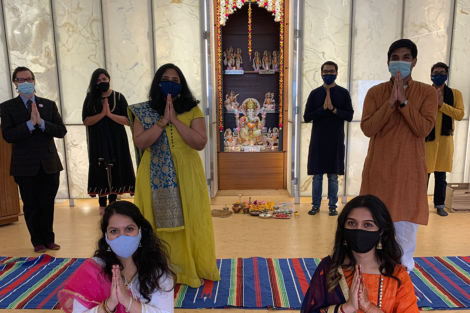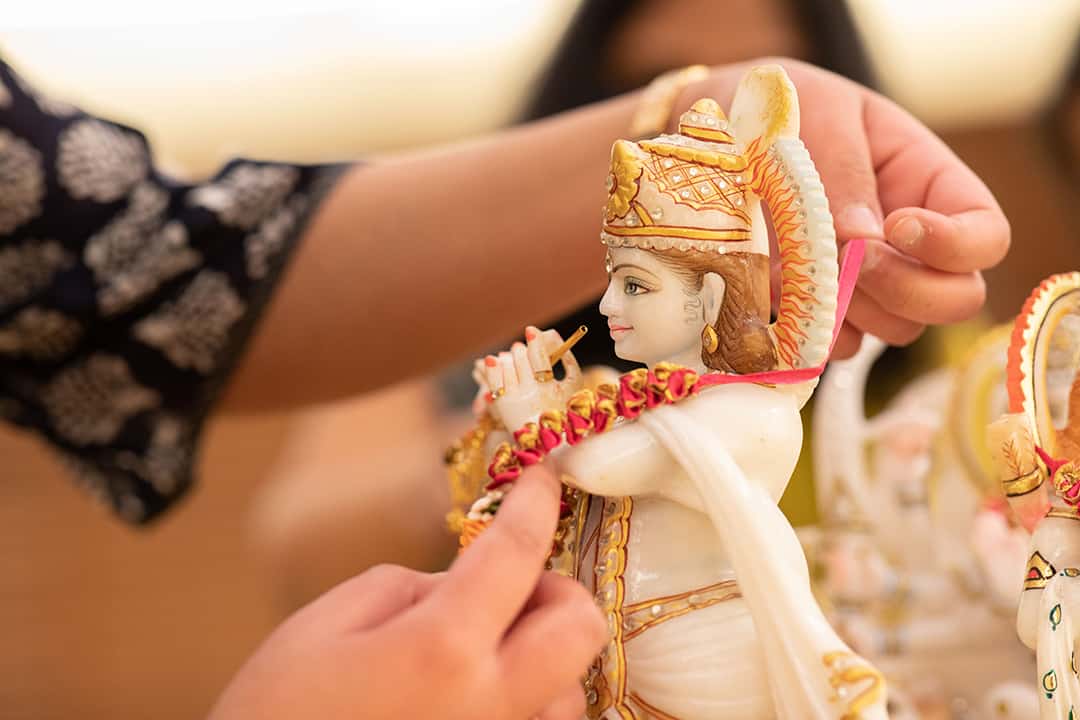A Hindu shrine was unveiled at the University of Toronto’s Multi-Faith Centre on November 14 — the first of its kind at a public Canadian university campus, according to the Multi-Faith Centre. The permanent shrine houses seven murtis, which are divine images of Hindu deities.
A group of Hindu student volunteers in partnership with the Multi-Faith Centre, the Campus Chaplains Association, and various faculty members spearheaded the project. The shrine was funded in part by the donations of 67 donors, who contributed $5,702 in total through a GoFundMe page.
Collaboration with community members, Multi-Faith Centre
In February, Director of the Multi-Faith Centre Richard Chambers approached Hindu Students Council (HSC) Co-President Himanshi Sehgal about the possibility of establishing a Hindu shrine at the centre. Previously, Hindu students like Sehgal had to travel off campus in order to find a shrine. “We were very limited in terms of where you could go,” she said. “Our closest temples were still a bus ride away.”
Sehgal, a fourth-year actuarial science and economics student, established and led an eight-member murti project committee composed of university alumni, graduate students, and undergraduate students. The project committee decided upon the design of the shrine and which murtis to include.
At first, the planning committee faced challenges related to the COVID-19 pandemic. “It was such an uncertain time,” Sehgal noted. “We weren’t sure if we’d even find enough donors.” Yet, the committee surpassed its $5,101 fundraising goal and raised almost half of it in the first 24 hours. “People were so generous,” she added. “It’s just beautiful — the way it just came together.”

Back: Richard Chambers, Himanshi Sehgal, Niharikaa Aiyar, Rishabh Mundhra, Atharva Gokhale, Anvesh Jain
Front: Nitya Gulati, Hitisha Solanki
Missing: Anvi Nagpal, Aditi Bhatia
COURTESY OF THE MURTI PROJECT
The team members originally planned on inaugurating the shrine in the summer, but the pandemic forced them to delay the unveiling. “It all worked out at the end because it coincided with Diwali,” Anvesh Jain, a fourth-year international relations student and member of the project committee, said in an interview with The Varsity.
The shrine was revealed at an event for the major Hindu holiday Diwali that was live streamed for community members via Facebook and hosted by Jain. “This was an effort borne of remarkable thought, dedication, and perseverance in the face of unexpected adversity, especially in a year like this one,” he said in the inauguration speech. “Let us promise that this will remain a space for open spiritual discussion and honest philosophical exchange.”
The centrepiece of the shrine is a murti of Lord Shri Ganesh, the Hindu god of beginnings, who is often worshipped at the beginning of prayer. Among the six other murtis in the shrine is Saraswati, the goddess of knowledge.
A part of campus life for years to come
Looking forward, Sehgal hopes that the shrine will be a site where Hindu students on campus can worship and attend larger events or festivities hosted by HSC. Though the pandemic has affected large-scale gatherings, the HSC has begun to coordinate with the Multi-Faith Centre in order to have a Hindu priest officiate prayers. There are also plans to create special darshan times when Hindu community members can visit the shrine for blessings.
“The installation of the murtis at the Multi-Faith Centre is a tangible expression of the University’s commitment to religious freedom and engagement of the whole person,” Chambers wrote in an email to The Varsity.
Jain expressed that he was proud of the success of the project and how it has stirred excitement within the Hindu community. “It was conceived by students, planned by students, and actually implemented by students,” he said. “I’m happy that it was us — that we were the first ones to make history.”
However, Jain is most excited about the legacy that this project will leave behind, long after he leaves the university. He said, “This is something I want to be able to come back to with my kids in 10, 20 years, and I want to be able to bring them and pray here. I want to look and tell them and say, ‘You know what? This is something your dad helped do.’ ”


